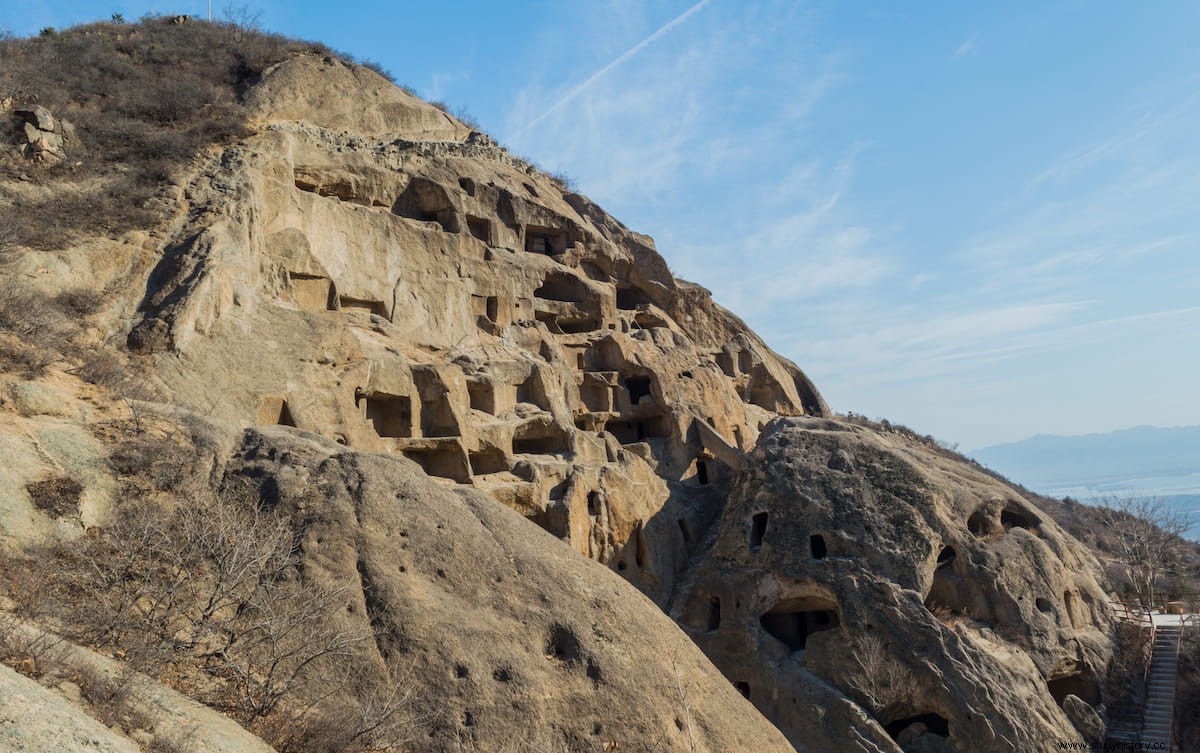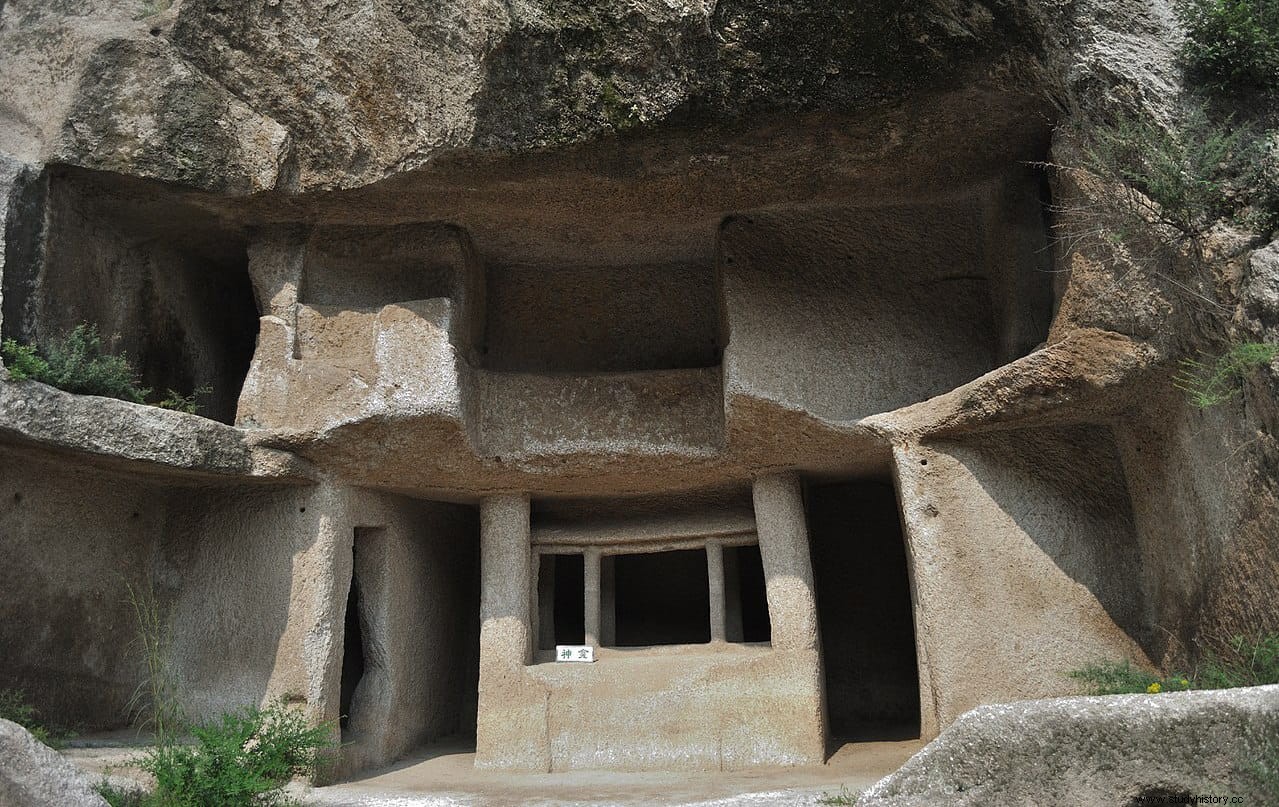In 1984, an expedition studying the cultural heritage of Yanqing County, located northwest of the city of Beijing, found a series of caves near the town of Dongmenying.
They are excavated in the rocky wall of a mountain, which is pierced by 117 caves inside which there are 350 chambers, since each cave consists of several rooms, most of which are approximately 1.8 meters high and 4 square meters. Of surface. The largest of all is 2 meters high, 3 meters wide and 5.2 meters long.
One of the caves, carved into the highest part of the rock face, is called Palacio del Cacique , since it has a more elaborate structure, it has eight rooms and is supported by columns carved into the rock.

The caves were carved at different levels on different faces of the mountain, giving the complex the appearance of a multi-story building. The site has two parts, the so-called front pit and the rear pit, with the caves located from east to west and covering an area of 1.5 square kilometers.
Some 91 caves are scattered along the southern, northern, and eastern slopes of the southern, northern, and eastern slopes, while another 26 are located on the eastern rear. Curiously, most of them were excavated on the shady slopes, where the sun does not usually shine, something strange considering the cold winter climate of the Pekingese region.

The caves themselves occupy an interior surface of 3.9 square kilometers, and they are accessed by stone stairs carved into the rock that are more than 10 meters high.
The interior of the caves is chiseled with ornate patterns, window openings, chandeliers, and what look like stone kangs (traditional northern Chinese heating system). A groove in the rock along the roof serves to collect rainwater. Stairs and interior bridges connect the different rooms.
It is not known who created them or who their occupants were, although some hypotheses point to a tribe of the Kumo Xi people from the Mongolian steppes.

The Kumo Xi inhabited northeastern China between AD 207 and 907, when they were completely assimilated into the Chinese Liao dynasty and disappeared from history. But a Kumo Xi tribe would have remained independent and isolated, carving out the Guyaju caves as a refuge and inhabiting them until about 960 AD, just the period of the Five Dynasties and Ten Kingdoms of China.
Another hypothesis considers the caves to be a lookout post of the Han dynasty, China's second imperial dynasty that ruled between 206 B.C. and 220 AD And there are even those who think that the complex was built by bandits on the run who had a more or less secure refuge in the caves.

It has been estimated that 100 people would have been needed for its construction, working continuously for five years. It is considered to be the first labyrinth in China .
The expedition that discovered them estimated their age between 1,000 and 2,000 years, or what is the same in a time span as wide as 6 B.C. until 1006 BC But strict dating has never been done by scientific methods.
Since 1991 they have become a tourist attraction in the area, receiving numerous visitors annually. In May 2013 the place was listed as a Protected Historical and Cultural Site.
